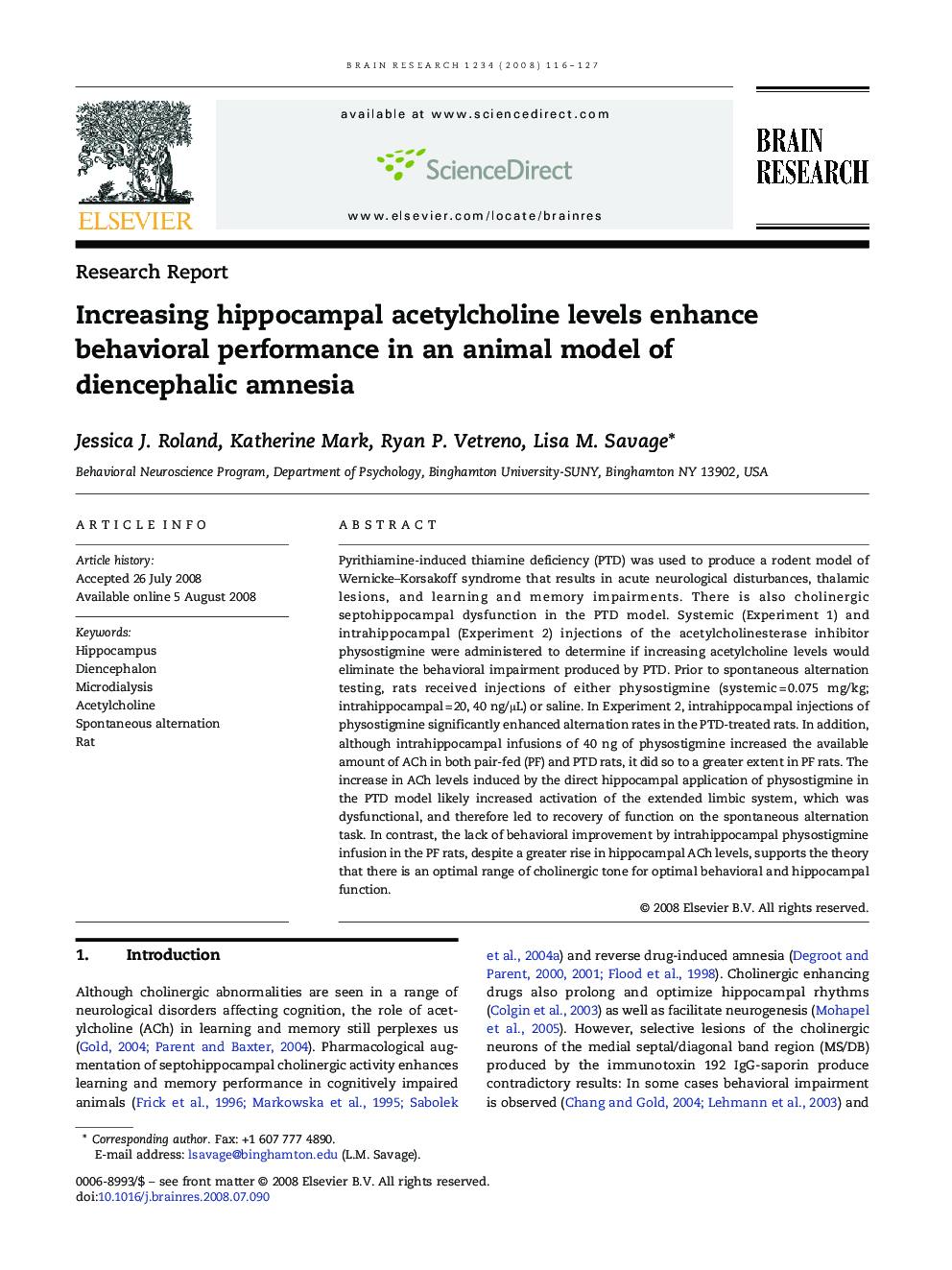| کد مقاله | کد نشریه | سال انتشار | مقاله انگلیسی | نسخه تمام متن |
|---|---|---|---|---|
| 4329095 | 1614205 | 2008 | 12 صفحه PDF | دانلود رایگان |

Pyrithiamine-induced thiamine deficiency (PTD) was used to produce a rodent model of Wernicke–Korsakoff syndrome that results in acute neurological disturbances, thalamic lesions, and learning and memory impairments. There is also cholinergic septohippocampal dysfunction in the PTD model. Systemic (Experiment 1) and intrahippocampal (Experiment 2) injections of the acetylcholinesterase inhibitor physostigmine were administered to determine if increasing acetylcholine levels would eliminate the behavioral impairment produced by PTD. Prior to spontaneous alternation testing, rats received injections of either physostigmine (systemic = 0.075 mg/kg; intrahippocampal = 20, 40 ng/μL) or saline. In Experiment 2, intrahippocampal injections of physostigmine significantly enhanced alternation rates in the PTD-treated rats. In addition, although intrahippocampal infusions of 40 ng of physostigmine increased the available amount of ACh in both pair-fed (PF) and PTD rats, it did so to a greater extent in PF rats. The increase in ACh levels induced by the direct hippocampal application of physostigmine in the PTD model likely increased activation of the extended limbic system, which was dysfunctional, and therefore led to recovery of function on the spontaneous alternation task. In contrast, the lack of behavioral improvement by intrahippocampal physostigmine infusion in the PF rats, despite a greater rise in hippocampal ACh levels, supports the theory that there is an optimal range of cholinergic tone for optimal behavioral and hippocampal function.
Journal: Brain Research - Volume 1234, 9 October 2008, Pages 116–127